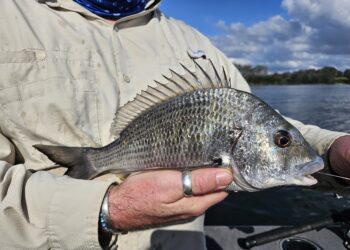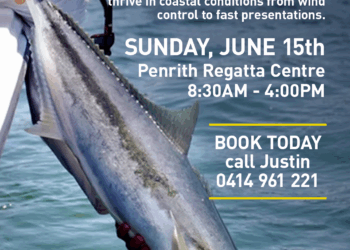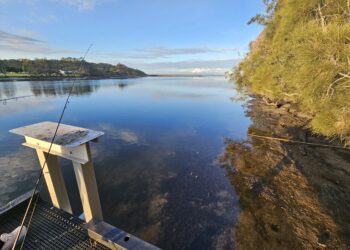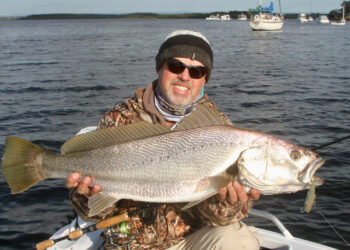TARGETING flathead on soft plastics is one of my favourite pastimes – they’re a great fish. I love their surprise attack in shallow water when you least expect it, and the fact you can generally find a fish or two with consistency. When time is limited, having that go-to species which offers a high likelihood of success is important.
And I think that’s why flathead are so popular here in Australia, they offer an accessible, reliable and exciting target for fisho’s of all ability. You don’t need to cover huge distances to find flathead, with some great fishing available right on the doorstep of urbanised areas. And in some locations you won’t even need a boat.
Dusky flathead have a huge following on the east coast, but there are plenty of other flathead species available right around the country for recreational anglers. If you have access to the coast, then you’ll likely have a species or two of flathead in your local area.
Although individual species vary in size, colouration and environment, they all share common traits with each other. All flathead share a similar body structure with long tapering bodies and flattened heads, with both eye set to focus upwards to assist with ambush feeding. There are slight variations in body structure, but they are fundamentally comparable. Below we’ll take a look at the various species of flathead targeted by recreational fisho’s around our country.
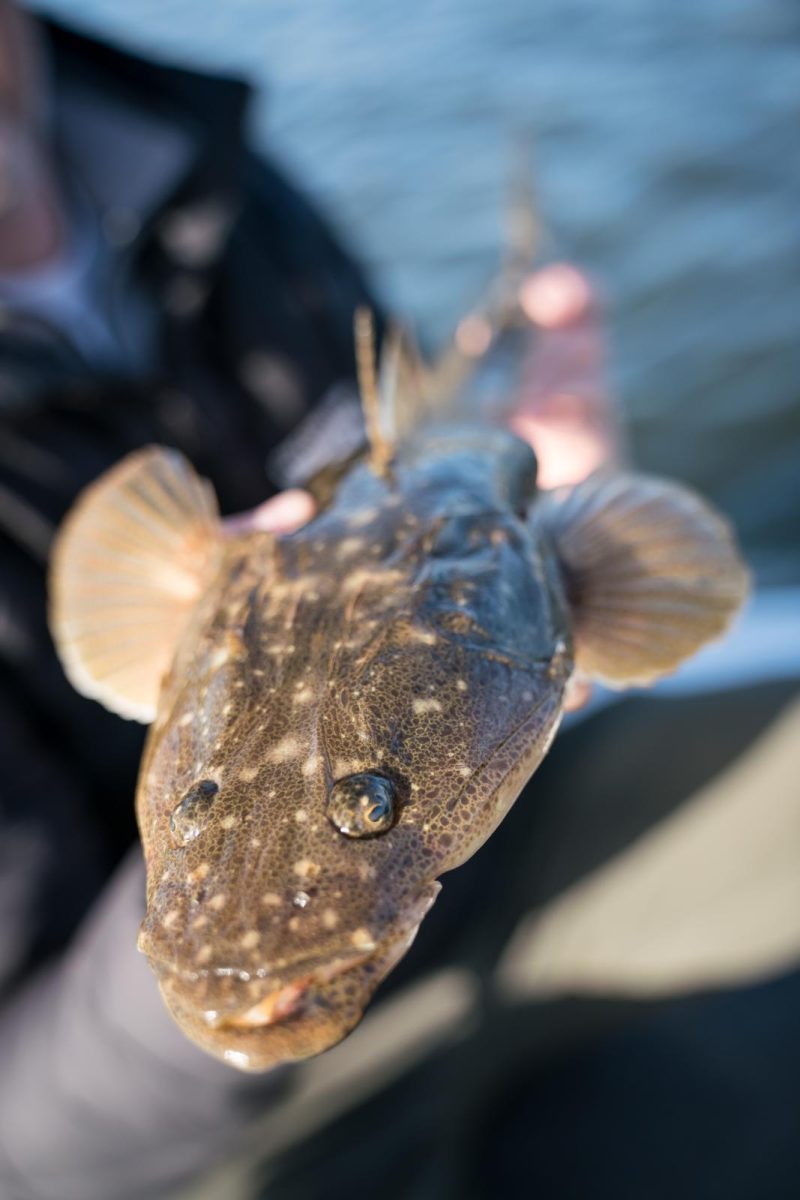
Dusky Flathead
Also referred to as lizards or crocs, duskies of the east coast are undeniably the most impressive species of flathead in Australia, growing to proportions exceeding all the other species. Dusky flathead have been recorded up to 120cm and 15kg in weight, although fish over the magic metre mark are very rare. Typical size is more within the 50 to 70cm bracket.
Duskies are distributed from Gippsland in Victoria and extend right up the east coast to Cairns in north QLD. Coastal estuaries throughout NSW and southern QLD are the stronghold of this species, where they have a huge recreational following. Dusky flathead can vary from a dark brown to an almost sandy or tan colouration. Dark bands are usually present across the back flank of the fish, with small white spots dotted over their top half.
Dusky flathead – like all flathead species – are experts at camouflage and will sit amongst weed or over rock waiting to ambush prey passing overhead. There are many and varied methods for targeting dusky flathead which has been well documented in these pages over the years. Techniques vary from livebaiting, to hopping soft plastics and metal vibes in deeper channels, through to hard body and topwater lures over the flats. Duskies are an aggressive species and will happily hit a variety of lures. The peak times for targeting duskies varies between geographical locations given their broad distribution, but typically late winter and into spring is considered the prime time in our east coast estuary systems.
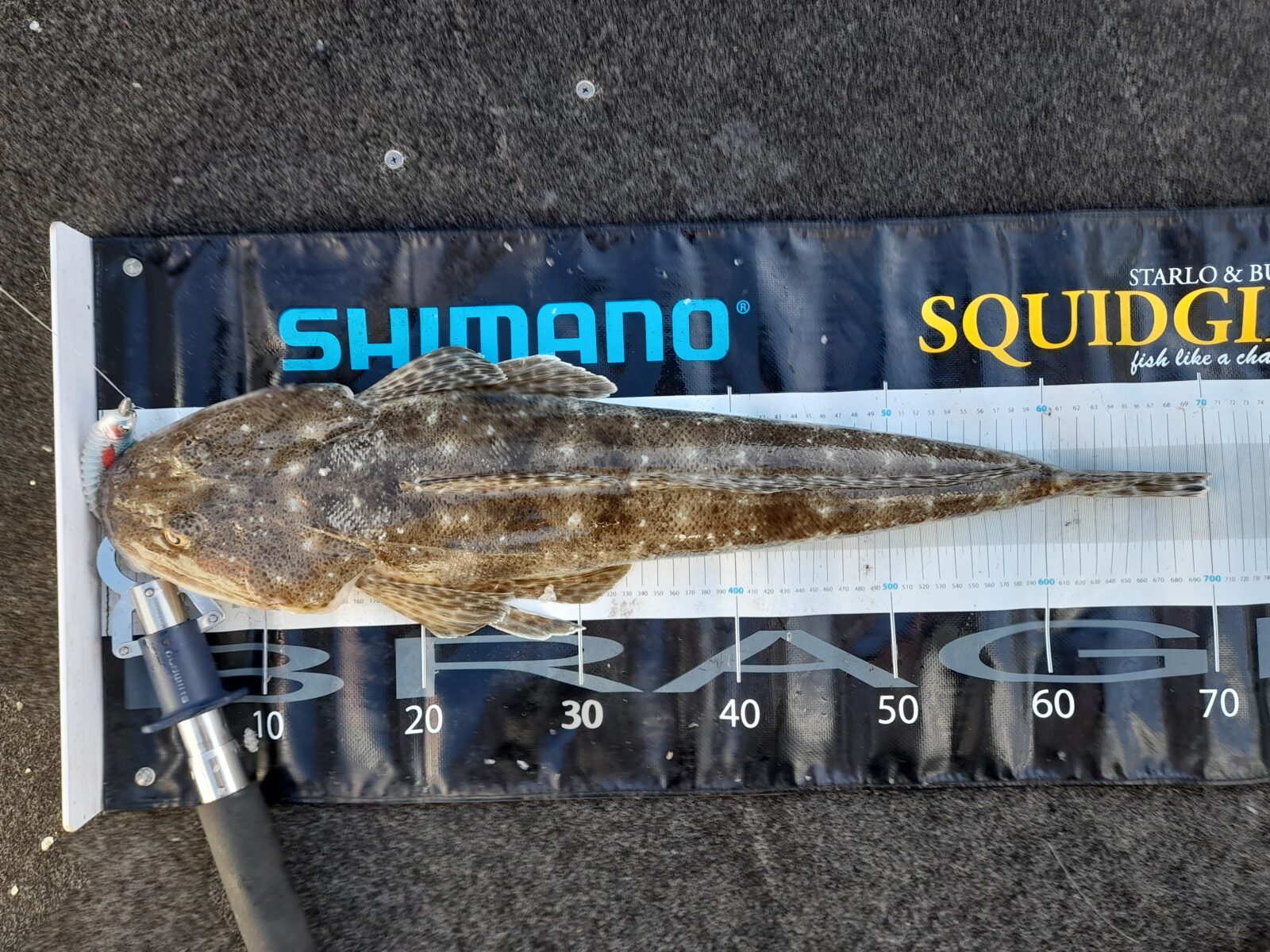
Southern Bluespot Flathead
Also called the Yank flathead, southern bluespot are a popular inshore target along Australia’s southern coastline. In essence they are the smaller cousin of the east coast duskies, with the two species sharing a lot of similarities in their environment and fishing styles. Southern bluespot extend from the Bemm river in eastern Victoria, through SA and up to Kalbarri in WA. They are a popular target in Port Phillip Bay, through coastal bays of SA and along the north coast of Tasmania. They are mainly found in shallower areas in water under 10m, but are occasionally caught as bycatch in deeper water to around 50m.
Not growing to the same proportions as the dusky flathead of the east, the southern bluespot has still been recorded up to 90cm in length and 8kg in weight. However, most of the fish encountered are in the 30 to 50cm size, with a trophy southern bluespot hitting 70cm. We target southern bluespot a lot in my home waters of SA, and we would see a genuine 70cm flathead only every second or third season.
Southern bluespot take on a very similar appearance to the dusky flathead, with individuals taken over weed and reef taking on a dark colouration, while those caught over sand are often a light sandy colouration. Their dominant colour is often mottled with blotchy bands, and as their name suggests they have small blue spots along their flanks. Southern bluespot have less aggressive teeth than duskies, but I still recommend using lip grips on the larger fish.
Southern bluespot can be targeted with lures and baits along the shorelines of coastal bays, around river mouths and any protected stretch of sand interspersed with rock and weed. They are ambush feeders and prefer some form of cover. Soft plastics in the 90 to 120mm range are ideal, and so too diving hard bodies worked around the edge of rock. Quite a few southern bluespot are caught incidentally on bait from the surf, and also when chasing King George from our shallow bays. They are encountered as bycatch throughout the year, but better concentrations of fish push into the shallows from March to August.
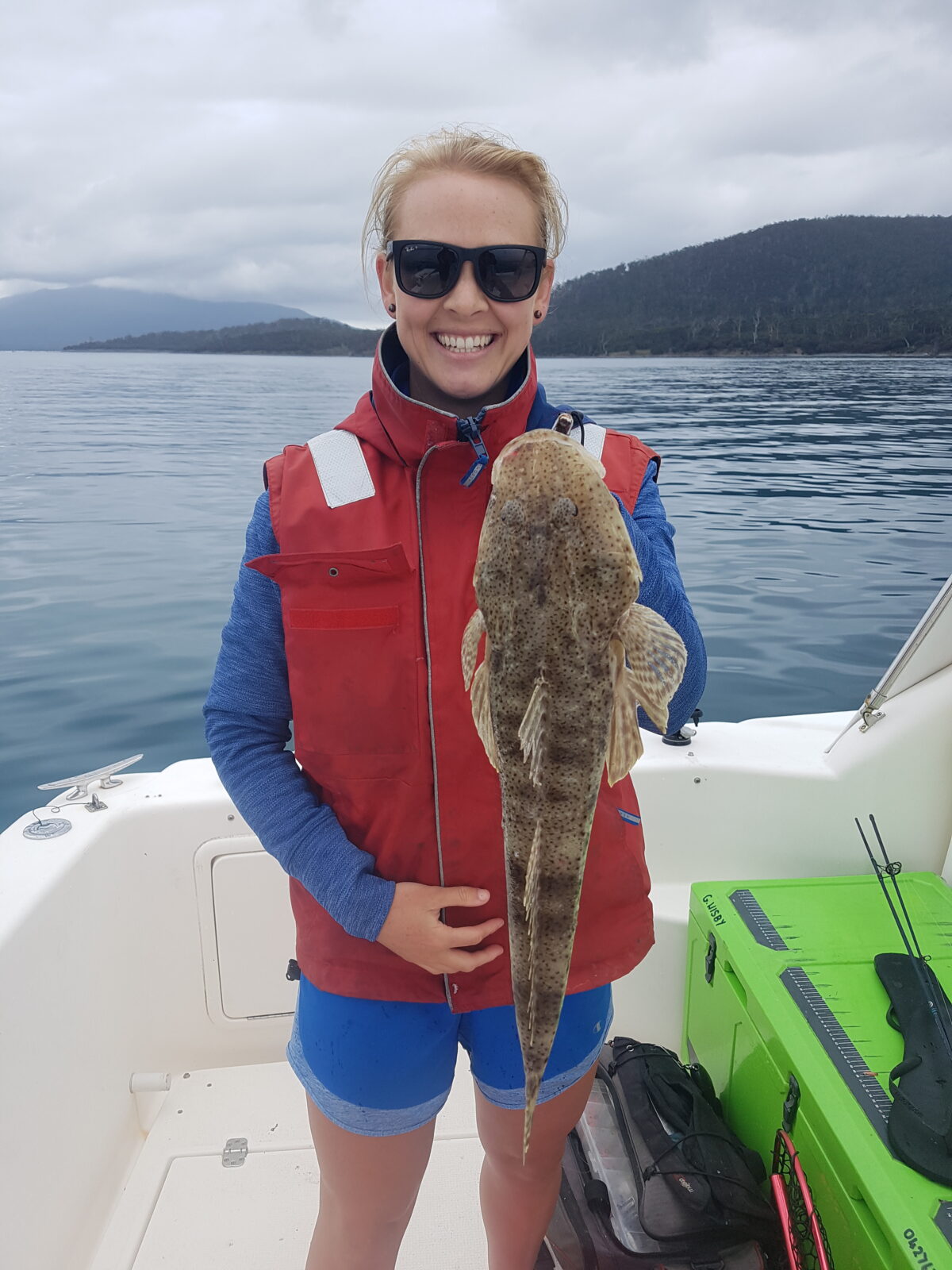
Southern Sand Flathead
Also called slimy flathead, bay flathead and sand flathead, this is the most popularly targeted recreational species in Tasmania. When Tasmanian fisho’s talk about catching a feed of flathead, this is the species they’re referring to. But because of their popularity the stock status is in decline in Tas, and the species is currently under the microscope with tighter regulations expected.
Southern sand flathead are distributed from the mid-north coast of NSW, and around the south east of the country and into the Great Australian Bight in SA. They are often found in deeper water than the above mentioned two species of flathead, with the southern sand found out to a depth of 100m.
They will happily take soft plastics and
hard body lures when presented to them, but you’ll need to target heavier ground than you normally would for other species of flathead.
Southern sand flathead are smaller on average to the dusky and southern bluespot, averaging 30 to 40cm, with a maximum size of around 55cm and approximately 1.3kg. Southern sand flathead are typically light brown in colour with bands of darker brown across their back flanks with dark red to brown spots across their body. They are a great eating flathead.
Most fish are taken while drifting baits across sand, shell grit and muddy bottoms, especially in the 10 to 30m depth range. Paternoster rigs are a popular way of targeting this species, with cubes of pilchard or small fillets of fish effective baits. They will also readily hit hard body lures and small metal jigs, as well as soft plastics in the 60 to 90mm size. We’ve caught a few southern sand flathead on 65mm curl tail grubs while targeting bream in the estuaries in southern Tas too.
Northern Sand Flathead
Also called flag-tailed flathead or northern bluespot flathead, this species is found from the north eastern tip of Tasmania and up the eastern seaboard to Yeppoon in QLD, and again in Western Australia from Hamelin Bay in the south, and up to Port Hedland in the north.
They are a fairly small species of flathead with the recreational catch only averaging around 30cm, with the species reported to only reaching 45cm in length. The species is a light sandy base colour with irregular mottled pink to red spots covering the upper half of the body. Their distinguishing feature are the dark horizontal bars across their caudal fin, which helps to distinguish them from the similar bar-tailed flathead of the north.
The northern sand flathead can be found out to a depth of 50m, but like most other flathead species they are more commonly caught through shallow bay and inshore waters. They are regularly caught from the surf beaches in northern NSW and southern Queensland. This species is commonly seen in schools, so when you catch one, you’ll invariably encounter others. They can be caught on soft plastics and hard body lures along the edge of sand flats, and also by drifting baits across sandy clearings.
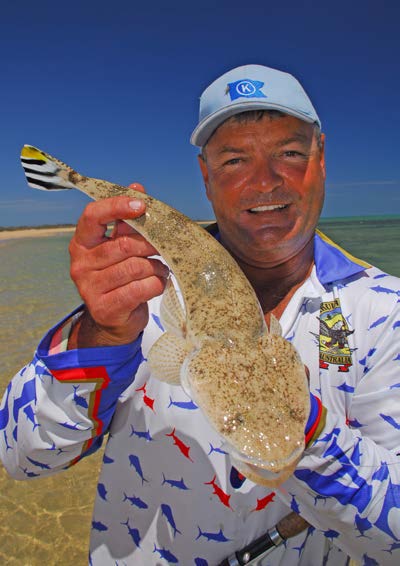
Bartail Flathead
Not to be confused with the northern sand flathead detailed above, the bartail flathead grows significantly larger with a prominent yellow blotch in the upper part of the caudal fin. The top half of the bartail body is typically sandy brown in colour, with some darker brown bands across the back of the flank. Together with the yellow blotch, the tail also has two to three black bars running horizontal. They have a very similar body shape and form as all above mentioned flathead species; quite flat and obviously designed for camouflage and ambush feeding.
The bartail flathead is occasionally called the Indian flathead, and is distributed from Moreton Bay in QLD, through the Gulf of Carpentaria, around the Northern Territory, and down to the Swan River in WA. They’re not just endemic to Australia, and are found globally in east Africa, the Philippines, Japan and Korea.
Bartail flathead have been recorded up to 90cm, although the commonly encountered size by recreational fishers is between 35 and 50cm. They are a great recreational target and will hit a variety of lures in a range of environments. We’ve caught them while wading the shallows at Exmouth, and also caught them incidentally around river mouths in the NT while casting hard body lures at drains and drop offs. They’re not appreciated with the same respect when they’re caught while casting for barra!
Similar to the dusky and southern bluespot flathead, the bartail flathead will happily feed over shallow flats, especially where there is some scattered rock, channel edges or weed where they can sit in camouflage. Bartail flathead are a popular target for land based fishers – especially in WA. They love soft plastics, but will also take metal vibes, hard body lures and even salt water flies.
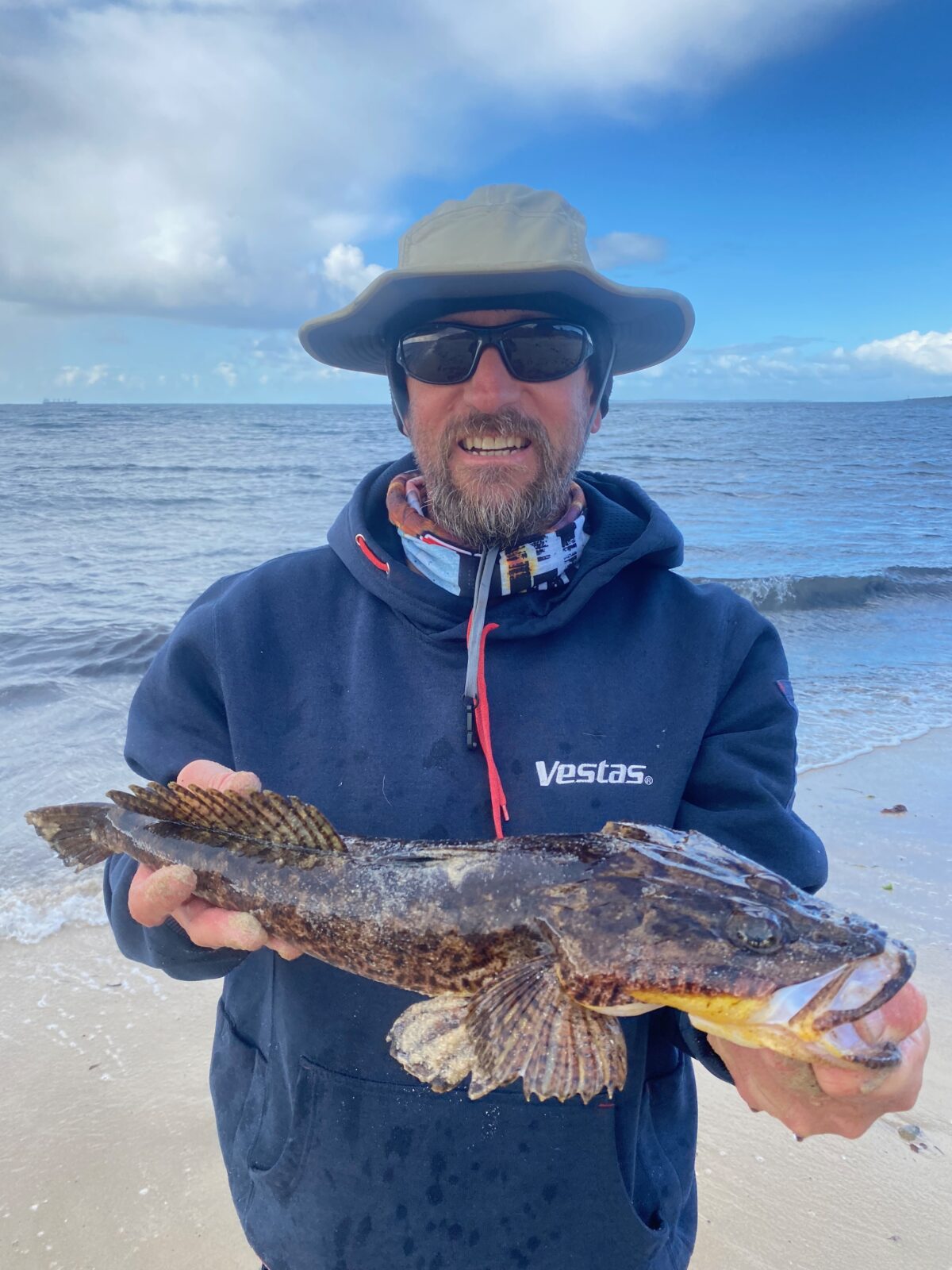
Rock Flathead
Probably the most unique looking of all the southern flathead species is the rock flathead, also referred to as a grass flathead. They have a narrower head and a deeper rounded body when compared to other species of flathead, and their colouration shifts from a pale green to brown with mottled markings down their flank which gives way to darker bands and light spots. They often take on a very dark colour once removed from the water. Rock flathead also have a yellow tail with black spots, but their undeniable identification is their deeper body and shorter rounded snout.
Rock flathead are restricted to shallow inshore waters out to around 20m depth, and are distributed from southern NSW, around Tasmania, through Vic and SA to Geographe Bay in WA. They are commonly encountered in the 35 to 45cm size range, but have been known to reach 60cm and around 2kg in weight. Rock flathead have the reputation as being the sweetest eating flathead of all the species. Rock flathead prefer to lie in ambush amongst reef and weed beds and do not bury themselves in sand like other species of flathead. It’s unusual to encounter a rock flathead away from the safety of structure. They are hard to specifically target as an individual species; they are mainly encountered as bycatch when targeting other flathead species in the south. They will happily take soft plastics and hard body lures when presented to them, but you’ll need to target heavier ground than you normally would for other species of flathead. We’ve caught quite a few rock flathead on half pilchard baits while targeting snapper over shallow inshore reefs. They’re always a welcome sight.
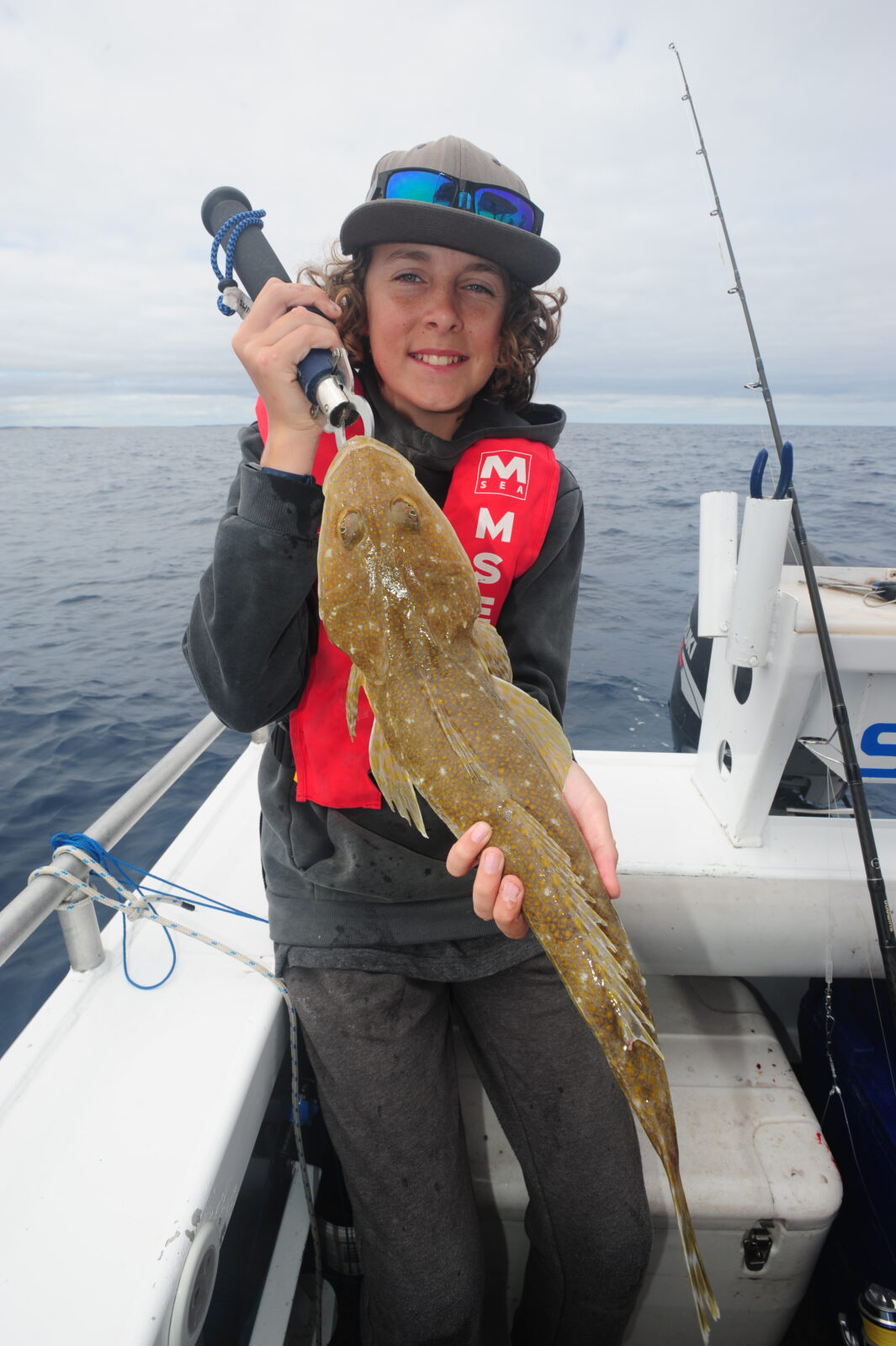
Tiger Flathead
Also called toothies and king flathead, the tiger flathead is caught in relatively deeper water around our southern coastline. This species is distributed from the mid north coast of NSW, around Tasmania and along our southern coastline into the Great Australian Bight. It’s unusual to encounter tiger flathead in water less than 20m deep and they extend right out to the continental slope in 350m of water. Tigers are typically caught at around 45 to 55cm in size, but have been recorded up to 65cm in length.
Tiger flathead have an impressive set of teeth – so don’t try the thumb grip with this species. They are slightly deeper bodied than other common flathead species, and their colouration varies from brown fading to grey blotches along the midline, with yellow to golden spots along their flanks and over their fins.
They are often caught bouncing baits over sand and shell grit in deeper water, and we pick the occasional tiger flathead up on baits in 40 to 60m of water if we drift past reef and onto sand. If we catch a flathead from water deeper than 30m in our area, then it’s more than likely going to be a tiger. Paternoster rigs with 4/0 hooks with baits of pilchard or squid are effective, and so too are micro jigs and soft plastics if they are weighted correctly. Tiger flathead are very good eating.
There is another species also referred to as a tiger flathead, but this alternate species is seldomly caught by recreational anglers. This species is the deepwater flathead or trawl flathead, and forms the basis of a commercial trawl fishery off southern WA and SA. This species is found in depths from 70m and down to 500m and hence not a popular recreational target. They look very similar to the abovementioned tiger flathead, but this species boasts orange to red spots over their body. Trawl flathead have a swim bladder allowing them to regulate their depth and are often found schooling in mid water (and hence their suitability as a commercial trawl species). Trawl flathead grow to 95cm and are a fantastic table fish.
There are, of course, other flathead species caught by recreational fishers around the country. Some of these include the marbled flathead, northern rock flathead and the tassel-snouted flathead, amongst others.
All flathead are good table fare, and as such most flathead species are governed by a bag and boat limit. In some areas this is a non-species specific combined bag limit, and there are also minimum sizes and slot limits in some regions so be sure to check local regulations first. And although flathead are a popular table fish, most fishos opt to release the larger breeding females, which is sustainable ethos. There’s nothing wrong with taking a couple of smaller fish home for the table.











